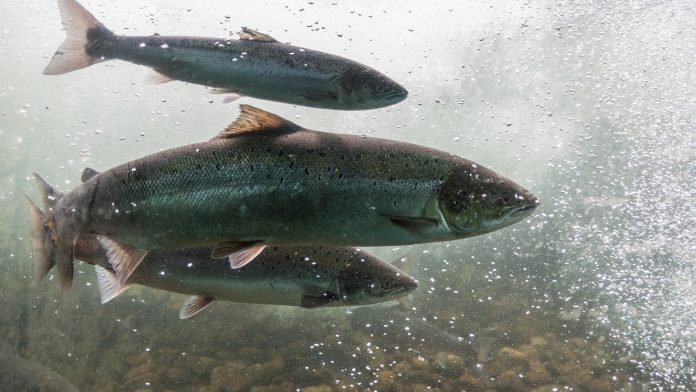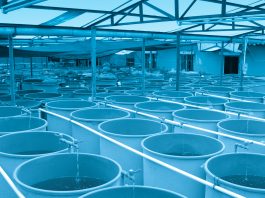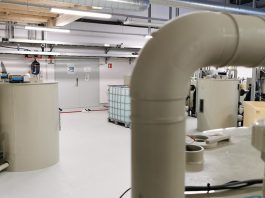The RAS 4.0 project, led by Norwegian food research institute Nofima, is designed to optimise recirculating aquaculture systems to improve the welfare and performance of Atlantic salmon. Here, Jelena Kolarevic, Project Leader and Senior Researcher at Nofima, explains more.
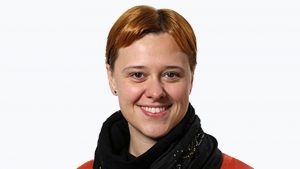
Aquaculture has undoubtable potential to contribute to increased protein supply for the growing global population. Recently, it has been the fastest growing and most efficient way of producing protein for human consumption. Over the last 20 years, global aquaculture production has tripled from 34 to 112 million metric tonnes in live weight, and the demand for aquaculture products is on the rise. The production and exporting of seafood in Norway has also been increasing in recent years. Today, Norway is the second largest seafood-exporting country, with 3.1 million metric tonnes of seafood worth €12.1bn exported in 2021. Atlantic salmon is the most valuable and leading seafood export item, accounting for almost 68% of the total export value last year.
However, the sustainability of Atlantic salmon production and its performance in aquaculture has been under scrutiny in the last few decades due to its potential contribution to the decline in wild fish stocks worldwide. Namely, Atlantic salmon is a carnivorous species that requires the use of fish oil and fishmeal in its diet, to manage its performance and welfare, that mainly originates from anchovy, herring, and krill. Those species have been heavily targeted by fisheries due to high demand in fishmeal and oil.
To meet the growing demand for sustainably-produced food, efforts have been made to replace fish-based products in salmon feed with alternative sources of protein, including plant-based proteins, microbial ingrediencies, algae and insects. This was done in parallel with extensive research on feed efficiency and fish nutrition. As a result, the amount of fish oil and fishmeal in salmon feed has been reduced from 90% in the 1990s to 25% now.
Innovation in Norwegian aquaculture
Another sustainability challenge for the Norwegian salmon industry in recent years has been the management of pathogens and parasites during production. Since 2017, reported Atlantic salmon mortality was between 14.7-16.1% of total production, accounting for 54 million individuals in 2021. Fighting salmon lice has been the Achilles heel hampering the desired production goals, increasing operational costs, impacting upon fish welfare and reducing profits for the salmon aquaculture industry.
Attempts have been made to limit the use of chemicals in treatment of this parasite to prevent its acquired resistance and limit environmental pollution. Instead, heavy investments have been made in developing new technologies for the delousing of fish or prevention of contact between the salmon and sea louse. Innovative new production technologies, such as sea lice skirts for sea cages or floating semi-closed containment systems in the sea, have been developed and tested as methods to prevent louse infestation. Recirculating aquaculture systems (RAS) have been used in the last decade as an effective solution for increased biosecurity and control of parasites and pathogens. At the same time, RAS provides arguably a more environmentally-friendly way of producing salmon.
In Norway, the use of RAS was driven by the lack of freshwater that would allow increased production in salmon hatcheries, prior to the grow-out phase in sea cages. However, issues with salmon lice, escapees and increased mortalities prompted change in the regulations that allowed prolonged production of salmon on land in freshwater, brackish, and seawater. Currently, a number of salmon producers in Norway are producing larger fish on land in RAS, followed by a shorter seawater production phase. In this way, production in sea can be reduced to only seven months and, with it, so can the need for use of chemicals and other methods to fight against the louse. However, RAS is the most expensive way of salmon production in Norway that is viable, due to continuously increasing operation costs of production in sea cages.
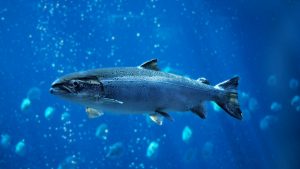
What are recirculating aquaculture systems (RAS)?
RAS are land-based production systems that allow for a reduced use of new freshwater by treating and reusing process water from the fish tanks. It is common that over 90% of water in RAS is reused, while the small amounts of new water added daily are treated to different extents to prevent the entrance of parasites like louse and potential pathogens. Extensive treatment of effluent water from the RAS facilities allows for collection of unused nutrients and their revalorisation, creating value and reducing potential environmental pollution. RAS production can be placed close to the market, reducing the environmental footprint associated with transport and logistics, which is another reason why this technology is perceived as more environmentally sustainable. However, it is important to state that the high energy demand for operation of RAS is undermining its sustainability potential.
Within RAS treatment, uneaten feed and excrements from fish are mechanically removed, while biological filtration is employed to remove potentially toxic metabolites produced by fish, such as ammonia and nitrite. The gas exchange processes are necessary to enrich water with oxygen and to remove carbon dioxide, providing fish with the necessary conditions for optimal growth.
It is often stated that RAS provides fully controlled production conditions that can be tailored to the farmed animal needs. This can be stated for temperature, oxygen, and pH control within systems, together with water flows, water speed and the addition of new water. However, fully automated control of key water quality parameters, such as ammonia, carbon dioxide, turbidity, then feeding management and energy usage, are still absent.
Currently, those key water quality parameters are manually measured as point measurements that serve as a basis for decision-making during daily operations. Fish are fed based on the estimated biomass in the systems, which can often lead to overfeeding and detonation of water quality or underfeeding, resulting in the reduced welfare of produced fish. Several water treatment processes are designed for maximum production capacity and cannot be optimised to reduce energy usage when biomass is lower.
The main barriers for reaching the desired level of automation are a lack of reliable sensors to measure these key parameters and a lack of models describing the dynamic relationships between them. All these elements interact through complex biological/chemical/physical mechanisms which are not fully understood. It is therefore not sufficient to control or optimise one parameter at a time – a holistic model of the whole system is required to achieve this level of control in RAS.
RAS 4.0
In 2021, the research council of Norway funded a four-year research project, known as RAS 4.0, with the aim of providing biologically-driven rapid-response automation of production conditions in RAS. This will be achieved through the integration of novel sensor technology, data integration and smart algorithms for optimal control of main water quality parameters, feeding management and energy usage. The main innovation will lead to the establishment of new control loops within RAS, addressing all three aspects in focus: control of ozonation, ammonia control, feeding control and control of energy usage in daily operation. By the end of the project, we hope to integrate new feedback loops into RAS operation and to validate their operation using digital twin RAS and empirical testing.
RAS 4.0 is a collaboration between Nofima, the project owner, research partners NORCE, UiT-the Arctic University of Norway, and industry partners, technology suppliers Searis, CreateView, Pure Salmon Kaldnes, OxyGuard and Norwegian salmon producer Lerøy Seafood group.
The project utilises the expertise of industry partners’ established technologies and know-how from sensor, data standards and integration. Together with leading research partners in RAS technology, fish physiology, behaviour, welfare, Machine Learning, data analytics, smart cameras, and computer vision, we are working to develop smart digital approaches to connect and optimise some of the physical, digital, and biological aspects of the system.
The objective of RAS 4.0 is driven by the hypothesis that the optimisation and control of production conditions based on biological drivers in RAS will lead to the improved welfare and performance of Atlantic salmon. Smart feeding of fish according to actual biomass and appetite will ensure optimal fish growth and minimise feed waste. Smart water quality control will ensure stable environmental conditions during production, minimising the potential for unforeseen episodes that can lead to reduced fish welfare and mortalities. It will allow producers to efficiently use energy sources in accordance with production needs. These improvements will increase the environmental and economical sustainability of RAS production and will reduce operational and investment risks.
Informative results
The RAS 4.0 project will create highly valuable knowledge that can be used by aquaculture and industry suppliers working to maximise the sustainability of these operations. Technology suppliers in this project offer commercially available products for the monitoring of fish or operations in aquaculture and RAS or are RAS suppliers. This project will catalyse their existing efforts aimed towards digitalisation and automation of RAS and integration of their products in the best possible way in existing RAS operations.
For Atlantic salmon producers, optimal growth performance and welfare of fish and efficient production is a prerequisite for sustainable production. Automation is the next logical step in the development of RAS that will allow them to maximise existing experience and learn from it. The ability to predict events during production based on data analysis is another aspect that is high on the wish list of producers. Realising RAS potential will reduce the pressure to increase production in the sea and secure increased investment in this important environmentally-sustainable solution to fish production.
Jelena Kolarevic
Senior Researcher
Nofima
nofima.com
https://www.linkedin.com/company/nofima/
https://www.facebook.com/Nofima
https://twitter.com/Nofima
Please note, this article will also appear in the tenth edition of our quarterly publication

